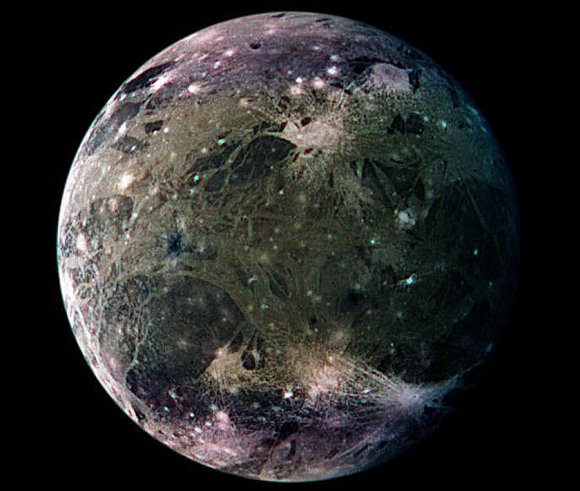18 April 2023
Landslides as a dominant landscape process on icy satellites
Posted by Dave Petley
Landslides as a dominant landscape process on icy satellites
The journal Icarus has a very interesting new paper (Mills et al. 2023) that considers why some icy satellites of large planets, such as those orbiting Jupiter and Saturn (in particular Ganymede, Europa, and Enceladus), have smooth surfaces with very few impact craters. There is a good plain English summary of this work on the Interesting Engineering website too. Conventionally, the theory has been that the smooth surfaces have been created by the eruption of fluids from volcanoes.

The topography of Ganymede, an icy satellite of Jupiter. Image NASA via phys.org
.
Interestingly, these icy satellites are known to be geologically-active, resulting from the high gravitational forces from the planets, which generate planetary seismic events (the equivalent of terrestrial earthquakes). This geological activity has created ridges, with smooth surfaces between them. The authors test the hypothesis that the seismic events trigger landslides from these ridges, which then mantle the surface of the icy satellite to create the smooth topography.
Mills et al. (2023) have used the dimensions of the fault scarps to estimate the magnitude of the seismic events (the ranger is M=4.0 to 7.9), and then have modelled the resulting seismic accelerations. These accelerations were found to be sufficiently large to exceed the gravitational accelerations of the satellites, allowing mass movements to develop. The team has assessed the potential volumes of the resultant landslides, using two different models. The more recent of these suggests that for Ganymede for example, the landslide volumes could be in the range of 2.3 × 106–1.4 × 109 cubic metres. It must be stressed that these are quite speculative – there are many assumptions implicit in that number – but it is a very interesting result.
There is much work to do on this idea, which will be greatly assisted by the forthcoming Europa Clipper and JUICE missions, which are intended to “provide high-resolution surface imaging, including stereo imaging, along with subsurface radar sounding, for both Europa and Ganymede”.
This study is another illustration of the key role that landslides play in planetary systems.
.
Reference
Mills, M.M., Pappalardo, R.T., Panning, M.P. et al. 2023. Moonquake-triggered mass wasting processes on icy satellites. Icarus, 399, 115534. https://doi.org/10.1016/j.icarus.2023.115534.


 Dave Petley is the Vice-Chancellor of the University of Hull in the United Kingdom. His blog provides commentary and analysis of landslide events occurring worldwide, including the landslides themselves, latest research, and conferences and meetings.
Dave Petley is the Vice-Chancellor of the University of Hull in the United Kingdom. His blog provides commentary and analysis of landslide events occurring worldwide, including the landslides themselves, latest research, and conferences and meetings.
Isn’t it preferrable to refer to those processes as “slope instability” instead of “landslides”? The term “land” has a much wider meaning than “ice”, where there are also a series of processes different from “sliding”: block toppling and fall, erosion (wind), avalanches, etc.
[Landslide is just the generic term for mass movements that principally involve rock, soil and/or debris. D.]
Did they used the geologico slip as the coseismic slip?